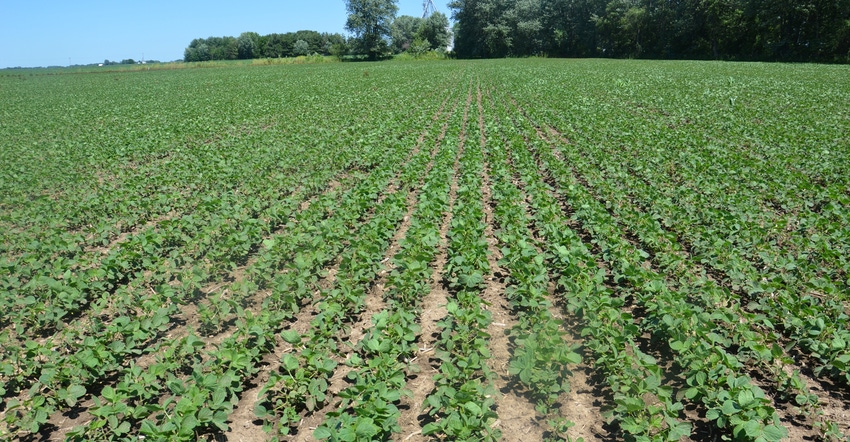June 2, 2017

There will likely be two groups of soybeans this year: those planted before the intense rains and those planted in mid-May or later, after the rains. Which group your fields fall in may partially determine when you need to look for certain weeds, diseases and insects.
The Soybean Watch ’17 field was planted in the last half of May, after big rains. Steve Gauck says weed issues may be different for those who planted before the rains. Gauck is a sales agronomist for Beck’s, based near Greensburg, Ind. Beck’s is the sponsor of Soybean Watch ’17.
“If you planted early and applied residual herbicides, they may have run out quicker than you thought,” he says. “You may have seen more weed escapes than normal.”
If you planted after the rains and sprayed residual herbicides, you might see fewer problems with escapes. However, you will need to watch soybean development closely if you’re planning to make a postemergence application with products like glyphosate or Liberty.
“Many labels specify that you can’t apply after the R1 stage,” Gauck notes. “That’s basically when flowers begin appearing.”
Flowering is a function of the maturity rating of the variety, photoperiod and accumulation of growing degree days. The photoperiod trigger is actually hours of darkness. So after the summer solstice in late June, most soybeans will begin flowering even if planted later, Gauck notes.
Adopt a strategy
One of the biggest choices you must make is whether to spend more money on the crop or hold the line on spending. “With my ag economics background, I lean toward doing what it takes to get as many bushels as possible to sell this fall,” Gauck says.
“In a tight budget year with depressed crop prices, I believe the best way to work your way out of it is to have more bushels to sell. That means protecting your yield potential and trying to produce as many bushels as you can,” he explains.
You may face this decision head-on when it comes to these inputs: fungicides, insecticides, macronutrients and micronutrients, Gauck observes. From what he has observed in Beck’s Practical Farm Research plots, there’s often an opportunity to earn more back than you spend with one or more of these inputs.
“It makes sense to spend $1 if there is a good chance you can get $2 back from it, even if you already have a lot invested in the crop,” Gauck says.
There is no right or wrong strategy, just the one that makes the most sense for you, he observes. Gauck suggests scouting for diseases and insects and paying attention to nutrients, as well.
If you decide to make the commitment and go for higher yield, timing of applications will be critical. In PFR studies, he’s seen the best results from fungicides and insecticides applied at R3, or beginning of pod set. Foliar applications of nutrients tend to return best results if applied between R1 and R3.
You May Also Like




